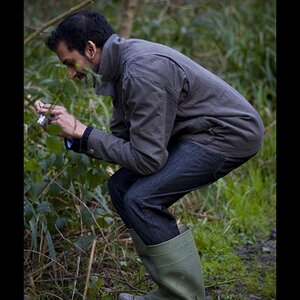I know that in general, p&s cameras have too short a focal length, and too limited ap. settings to get a small depth of field. Wondering if anyone knows one that gets closer to being able to achieve smaller d.o.f without shooting macro way up close. Thanks for anyone's help.
Navigation
Install the app
How to install the app on iOS
Follow along with the video below to see how to install our site as a web app on your home screen.

Note: This feature currently requires accessing the site using the built-in Safari browser.
More options
You are using an out of date browser. It may not display this or other websites correctly.
You should upgrade or use an alternative browser.
You should upgrade or use an alternative browser.
Compact camera that can get the shortest depth of field?
- Thread starter pubius
- Start date
I'm assuming you mean digital. If not there are several fixed-lens compact film cameras that would fit the bill. Otherwise I think the majority of fixed-lens compact digital models have f/2.8 or slower lenses. The Canon Powershot G6 has an f/2.0-f/3.0, and one of the Panasonic FZ models had a constant f/2.8, so that might be the best you can get in compact models. I'll give the usual advice here and say an SLR with a fast prime lens is the best way to achieve shallow DOF, but obviously a dSLR may not be the right choice for you, in which case the Powershot and Panasonic are both highly regarded.
markc
TPF Noob!
- Joined
- Mar 8, 2004
- Messages
- 4,237
- Reaction score
- 6
- Location
- Rochester, NY Velocity: Unknown
- Website
- www.markcarpenter.com
- Can others edit my Photos
- Photos NOT OK to edit
Unfortunately that's the biggest I've seen also. 
darich
No longer a newbie, moving up!
- Joined
- Jan 22, 2005
- Messages
- 1,230
- Reaction score
- 1
- Location
- Near Lanark, Scotland
- Website
- www.darich.co.uk
- Can others edit my Photos
- Photos NOT OK to edit
I'm pretty sure my Canon A85 can open up to f/2.8 but it seems when ever i use it the depth of field isn't anywhere near as shallow as it is when using my SLR
- Joined
- Dec 16, 2003
- Messages
- 33,896
- Reaction score
- 1,853
- Location
- Edmonton
- Website
- www.mikehodson.ca
- Can others edit my Photos
- Photos NOT OK to edit
Even though some digi-cams can open up to F2.8....part of what determines DOF...is the size of the recording medium...and with all the compact digi-cams...the sensor is very small.
markc
TPF Noob!
- Joined
- Mar 8, 2004
- Messages
- 4,237
- Reaction score
- 6
- Location
- Rochester, NY Velocity: Unknown
- Website
- www.markcarpenter.com
- Can others edit my Photos
- Photos NOT OK to edit
As I understand it, it's not the size of the sensor directly, but the short focal lengths they have to use. The f numbers are a ratio, not a direct measurement of size. f2.8 on a 50mm is an opening about 19mm in diameter. On a 9mm lens (one camera I looked at has a range of 5.8mm-17.4mm for its lens!), f2.8 is only 3mm. 3mm on a 50mm lens is f16! Cropping comes into play, which might enlarge the effective area in focus; but still, f16 is a huge difference from f2.8, even if you crop in quite a bit.
As an aside, f2.8 on a 300mm lens is a whopping 107mm across, which is why large aperture telephotos are so expensive. That's like having an f.45 on a 50mm lens. It would be more than twice as wide as it is long!
As an aside, f2.8 on a 300mm lens is a whopping 107mm across, which is why large aperture telephotos are so expensive. That's like having an f.45 on a 50mm lens. It would be more than twice as wide as it is long!
Flash Harry
No longer a newbie, moving up!
- Joined
- Jun 26, 2006
- Messages
- 1,965
- Reaction score
- 14
- Location
- Durham, UK
- Website
- www.smudgesphotos.co.uk
- Can others edit my Photos
- Photos NOT OK to edit
I dont use P&S cams myself but its unessesary to have a wide aperture to put the background out of focus, simply move closer to the subject and focus on what you need sharp, the BG will be out of focus.
mysteryscribe
TPF Noob!
- Joined
- Feb 1, 2006
- Messages
- 6,071
- Reaction score
- 3
- Location
- in the middle of north carolina
- Website
- retrophotoservice.2ya.com
- Can others edit my Photos
- Photos OK to edit
frankly in these days of digital editing short depth of field is over rated.
markc
TPF Noob!
- Joined
- Mar 8, 2004
- Messages
- 4,237
- Reaction score
- 6
- Location
- Rochester, NY Velocity: Unknown
- Website
- www.markcarpenter.com
- Can others edit my Photos
- Photos NOT OK to edit
Why is that? I find that adding it in Photoshop looks fake to me. Software is great for a lot of things, but smooth dof transitions is not one of them. That's why I don't care for using PS to try and emulate the LensBaby.mysteryscribe said:frankly in these days of digital editing short depth of field is over rated.
markc
TPF Noob!
- Joined
- Mar 8, 2004
- Messages
- 4,237
- Reaction score
- 6
- Location
- Rochester, NY Velocity: Unknown
- Website
- www.markcarpenter.com
- Can others edit my Photos
- Photos NOT OK to edit
That doesn't work so great with narrow apertures. Plus you choose a focal length based on how it looks, you may be limited on how close you can get.Flash Harry said:I dont use P&S cams myself but its unessesary to have a wide aperture to put the background out of focus, simply move closer to the subject and focus on what you need sharp, the BG will be out of focus.
- Joined
- Dec 16, 2003
- Messages
- 33,896
- Reaction score
- 1,853
- Location
- Edmonton
- Website
- www.mikehodson.ca
- Can others edit my Photos
- Photos NOT OK to edit
I was under the impression that the size of the projected image was a factor. Don't you get a shallower DOF with medium or large format, at the same aperture (ratio) than with 35mm? I could easily be wrong though.markc said:As I understand it, it's not the size of the sensor directly, but the short focal lengths they have to use. The f numbers are a ratio, not a direct measurement of size. f2.8 on a 50mm is an opening about 19mm in diameter. On a 9mm lens (one camera I looked at has a range of 5.8mm-17.4mm for its lens!), f2.8 is only 3mm. 3mm on a 50mm lens is f16! Cropping comes into play, which might enlarge the effective area in focus; but still, f16 is a huge difference from f2.8, even if you crop in quite a bit.
As an aside, f2.8 on a 300mm lens is a whopping 107mm across, which is why large aperture telephotos are so expensive. That's like having an f.45 on a 50mm lens. It would be more than twice as wide as it is long!
markc
TPF Noob!
- Joined
- Mar 8, 2004
- Messages
- 4,237
- Reaction score
- 6
- Location
- Rochester, NY Velocity: Unknown
- Website
- www.markcarpenter.com
- Can others edit my Photos
- Photos NOT OK to edit
That depends on how you do the comparison. A smaller film/sensor is just the same as a crop if you are using the same lens. But if you are comparing "normal" lenses, then you are comparing a 50mm to an 80-90mm. At f2.8, that's an aperture of 19mm on the 35mm film camera and an aperture of 30mm on the MF camera. Thats a much wider aperture for a normal MF lens, so you will get less DOF. I personally think that the actual aperture size might be more useful info than the ratio. I wonder why they went with that for a label. Maybe I'm missing something about how the focal length itself affects DOF, but from the info I find, it doesn't. It's more how we use the lenses. The main reason that telephoto lenses seem to have less DOF is that we use them at greater focal distances, and that the actual aperture opening is larger for the same f number. When you change sensor sizes, the distance to the subject remains the same for its "normal" lens, but the aperture size changes for the same f-stop.
mysteryscribe
TPF Noob!
- Joined
- Feb 1, 2006
- Messages
- 6,071
- Reaction score
- 3
- Location
- in the middle of north carolina
- Website
- retrophotoservice.2ya.com
- Can others edit my Photos
- Photos OK to edit
Im sorry I dont agree with the depth of field edit thing.
I dont use photoshop but a few of the clones. I soften out the objects one at a time not all the same so I don't have a problem although frankly i dont do it often. Most of the things I do are like i would have done them in a dark room. Each object in the frame is treated seperately so I vary the amounts of softness just as you would get with depth of field in the camera and once you pass the very edge of the focus area it is all the same anyway.
Before you lose it an object ten feet past the focus area is the same softness as one 20 feet. You just need to vary the ones at the edge of the area of focus.
In my opinion you guys are making a mountain out of a mole hill but that is just an opinion. You didn't expect me to agree did you?
Unless someone has changed the way depth of field is managed from medium format to 35mm all lens react more or less the same because of their distance from the film or sensor i would guess. aka focal length of the glass to film. Zooms sometimes dont work the same thought since some of them don't move all the glass just the front elements leaving the rear at the same focal length. At least that what I was alway told.
That being the case I would think the lack of depth of feild has more to do with the fact that the true focal length is a lot shorter on digicams because of the sensor size in pns and full size. I would think you would have more control over it in 35mm film. In other words you would use a larger fstop for the same depth of field with 35mm. The true focal length not the sensor would be the problem. Just a logical assumption. Which in photography is probably going to make the north end of a south bound horse of me
I dont use photoshop but a few of the clones. I soften out the objects one at a time not all the same so I don't have a problem although frankly i dont do it often. Most of the things I do are like i would have done them in a dark room. Each object in the frame is treated seperately so I vary the amounts of softness just as you would get with depth of field in the camera and once you pass the very edge of the focus area it is all the same anyway.
Before you lose it an object ten feet past the focus area is the same softness as one 20 feet. You just need to vary the ones at the edge of the area of focus.
In my opinion you guys are making a mountain out of a mole hill but that is just an opinion. You didn't expect me to agree did you?
Unless someone has changed the way depth of field is managed from medium format to 35mm all lens react more or less the same because of their distance from the film or sensor i would guess. aka focal length of the glass to film. Zooms sometimes dont work the same thought since some of them don't move all the glass just the front elements leaving the rear at the same focal length. At least that what I was alway told.
That being the case I would think the lack of depth of feild has more to do with the fact that the true focal length is a lot shorter on digicams because of the sensor size in pns and full size. I would think you would have more control over it in 35mm film. In other words you would use a larger fstop for the same depth of field with 35mm. The true focal length not the sensor would be the problem. Just a logical assumption. Which in photography is probably going to make the north end of a south bound horse of me
Flash Harry
No longer a newbie, moving up!
- Joined
- Jun 26, 2006
- Messages
- 1,965
- Reaction score
- 14
- Location
- Durham, UK
- Website
- www.smudgesphotos.co.uk
- Can others edit my Photos
- Photos NOT OK to edit
markc said:That doesn't work so great with narrow apertures. Plus you choose a focal length based on how it looks, you may be limited on how close you can get.
Going off what the first poster said getting up close is no problem, narrow apertures are not a problem either depending on how distorted you want the background, in studio I shoot f11, my subjects are pin sharp, the background 5 feet away is not, I rarely shoot from a distance of more than 10 feet with a 135mm lens, with digital slr, outdoor wedding f8-11 at 70mm from roughly 8 feet the background is also blurred, I choose my focal length to suit the task and take the appropriate position to achieve the "look"
Similar threads
- Replies
- 5
- Views
- 624
- Replies
- 5
- Views
- 512
- Replies
- 13
- Views
- 1K

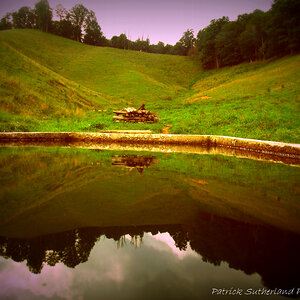

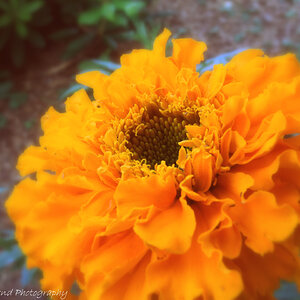
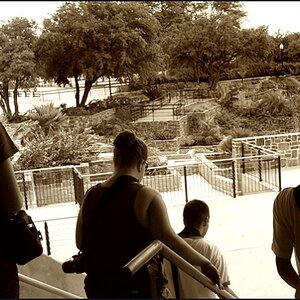
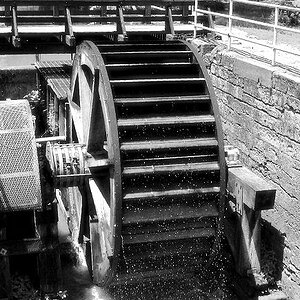
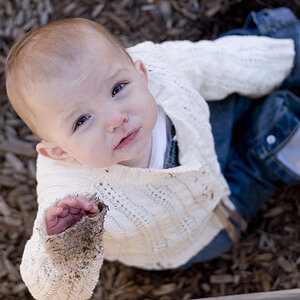
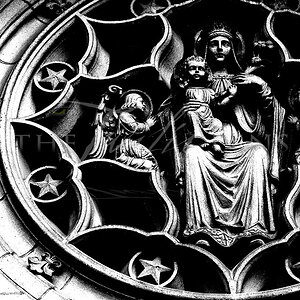

![[No title]](/data/xfmg/thumbnail/42/42397-30faa170de7ed9be38adf00b9b26a220.jpg?1619740167)
![[No title]](/data/xfmg/thumbnail/36/36651-948fc64542c147745d3f3c48bce31dce.jpg?1619737673)

